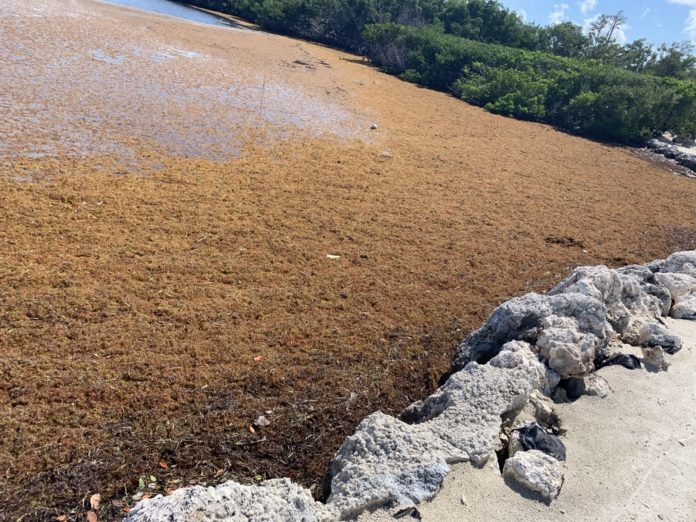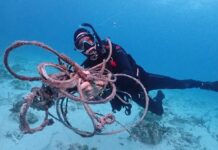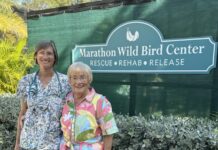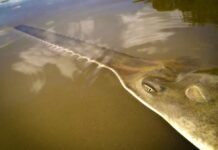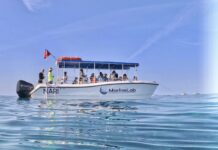Swaths of sargassum are piling the shores near and far from the Keys to the Caribbean. And while Islamorada isn’t the only one dealing with the statewide and international problem, the village is seeking a comprehensive approach to address the stench and amassing of seaweed on beaches.
“We’re having an issue, but we’re not alone,” said Mayor Deb Gillis. “We need to try to get something done locally. Many of those seaweed beaches are also turtle beaches, so we have to protect the turtles.”
Sargassum is a type of algae that floats in an island-like mass that can stretch miles across the ocean. This floating habitat serves as a food source for fish, marine birds and sea turtle. It also serves as a primary nursery for a variety of commercially important fishes.
Too much seaweed, however, can smother corals and seagrass. And it ultimately ends up on beaches, releasing gas that smells like rotten eggs. Scientists have called this year’s bloom the Great Atlantic Sargassum Belt, spanning 5,500 miles and made up of over 20 million tonnes of biomass. What’s been a naturally-occurring phenomena has now exponentially exacerbated with a perfect storm of conditions — nutrient loading, right water temperatures and the right current.
Village Manager Seth Lawless said village staff is researching how other municipalities are handling the seaweed and specifically handling cleanup at turtle beaches. Nesting season began in April and goes through October. Lawless said they want to Robert Moser’s Lower Matecumbe residence to examine the extent of the problem.
“Maybe we can start a trial project where we locate the nests and invite a monitor out to watch the activity and do a 100-foot stretch and see how it goes,” Lawless said. “Maybe with identification of nests and somebody out there watching nests to make sure they don’t get run over, maybe we can recommend changes to the ordinance.”
Turtle beaches have protection per a village law. As it relates to mechanical cleaning, devices used for removing debris from the beach can’t penetrate the beach substrate by more than 2 inches. In addition, lightweight motorized vehicles are to be used for beach-cleaning operations.
“We need to take a look and make sure that any ordinances and regulations we have are updated, because there may be some equipment that can be used that we may be restricting, but with second look, we have that can be used but we’re restricting,” said Councilman Ken Davis.
Moser, who’s a Lower Matecumbe Beach Association member, acknowledged appreciation for council bringing the problem to the forefront. Expressing health concerns and deteriorating conditions impacting the enjoyment of beaches, Moser recommended the Nearshore Water Committee to take on the important community issue.
“Our use and enjoyment are diminished, you can’t swim off your home where we used to get in water and swim out,” Moser said. “It’s not pleasant to be in that. There are commercial fishermen that their bait is dying, that boats can’t get out of certain harbors at a time.”
Village Attorney Roget Bryan said there’s going to be some modification how the village has historically handled seaweed and protecting turtle nesting habitat with a common sense approach.
“There are some potentially negative effects from all the sargassum coming in, de-oxygenation of water, de-oxygenation of canal basin and of course stench on the beaches,” he said.
Vice Mayor Mike Forster said it might be good to engage with the Florida League of Cities on the matter. Bryan responded by stating that it was a topic of discussion during the utility, resources, and public works policy committee meeting. Bryan said there needs to be a multi-layer approach.
“It’s not just about legislation. It’s not just about beach cleaning. It’s really how best to attack this because the problem will continue for the next year or two,” Bryan said.















